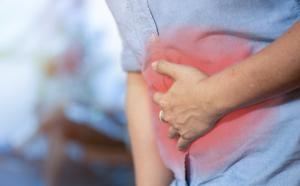What Causes Gallstones and How to Prevent Them

The gallbladder is a small organ that is located below the liver.
It is responsible for storing bile secreted by the liver and releasing it when we eat to achieve proper digestion.
When this digestive fluid hardens, it can form deposits called gallstones, which can be small (the size of a grain of sand) or large (almost the size of a golf ball).
Why do gallstones form?
In many cases, gallstones do not cause symptoms and pass undetected. However, they can get stuck in the pancreatic duct or bile duct and cause:
- Back pain
- Shoulder pain
- Sudden, rapidly intensifying pain in the center or upper right abdomen
- Nausea or vomiting
This discomfort can last anywhere from several minutes to several hours.
The origin of gallstones is currently unclear, but the most common causes are:
- Too much bilirubin
- Too much cholesterol
- Difficulty emptying the bladder
Although anyone can get gallstones, the people most at risk are:
- Adults over age 40
- Latinos
- Women
- Pregnant women
- People with a family history of gallstones
- People with diabetes
- People with liver disease
- People who are overweight or obese
- People with blood disorders
- People who are sedentary
Another key factor is diet. Professionals have found a link between a higher rate of gallstones and people who have diets that are high in fat and cholesterol and low in fiber.
Permitted foods
You should choose foods that are rich in fiber and antioxidants:
- No- or low-fat meats, such as pork or beef chops, loin, or sirloin, and chicken breasts
- Grains, such as oatmeal or quinoa
- Fruits (in moderation), preferably ripe, in compotes or purees
- Eggs
- Skim dairy and dairy products
- White fish, such as cod, sea bass, or hake
- Seeds, such as sesame, chia, sunflower, or flax
- Greens and vegetables in general
You should also stay hydrated by drinking between 2 and 2 ½ liters (67 to 84 ounces) of water a day.
Harmful foods
You should avoid food and drinks that are hard to digest, as they promote the production of cholesterol and bilirubin that bile cannot dissolve. For example:
- Alcoholic beverages
- Coffee
- Fatty meat
- Spicy or spiced food
- Sweets and chocolate
- Cold cuts
- Picked or canned food
- Fried food
- Acidic fruits, such as citrus, dried fruit, and candied fruit
- Fats in general
- Strong or acidic herbal teas
- Dairy and dairy products
- Baked goods
- Pasta
- Oily fish, such as anchovy, tuna, salmon, or sardine
- Soda
- Raw vegetables
Remember:
Until there is significant scientific evidence from studies in humans, people should be very careful when using herbal therapies and supplements.
Don’t stop or change your medications or treatments before speaking to a doctor about the potential effects of complementary or alternative therapies.
Don’t forget that the medicinal properties of herbs and supplements can also interact with prescription medications and other herbs and supplements and may even affect your diet.
Sources: Natural Medicines Comprehensive Database; National Library of Medicine; Mayo Clinic; National Center for Complementary and Integrative Health.
© 2025 Pan-American Life
